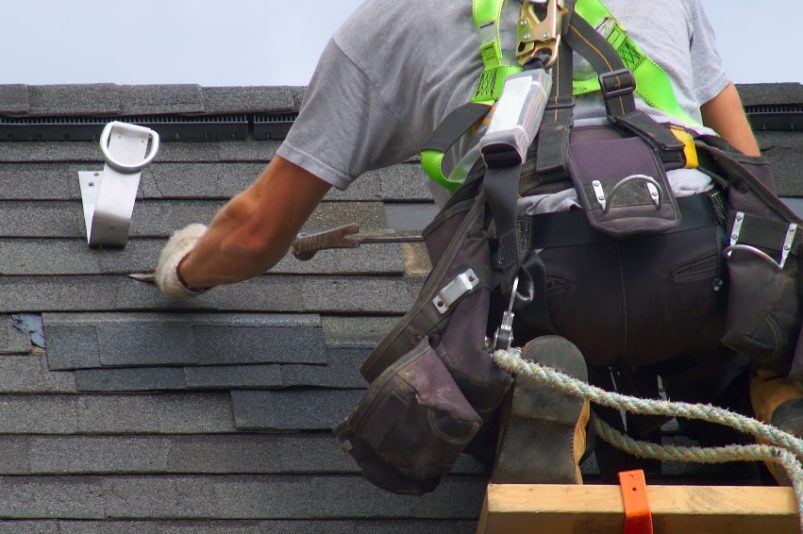
Roof shingling is a critical aspect of any building’s construction and maintenance. The number of shingle layers, while often overlooked, plays a significant role in the roof’s performance, longevity, and the building’s overall safety. While it might be tempting to add multiple layers of shingles as a quick fix or a perceived enhancement of protection, the implications of such a decision can be far-reaching. This article delves into the technicalities and consequences of layering roof shingles, providing a comprehensive guide for those seeking an advanced understanding of this crucial topic.
The Science Behind Roof Shingling
Roof shingling is more than just an aesthetic feature; it’s a complex process guided by engineering principles and material science. Shingles serve multiple purposes, from protecting the roof structure against weather elements to managing water runoff and contributing to a building’s thermal performance.
Different types of shingles, such as asphalt, wood, and slate, each come with a unique set of properties. For instance, asphalt shingles, the most common type in many regions, offer a balance of affordability, durability, and ease of installation. Wood shingles, while more aesthetically appealing to some, require more maintenance and have different thermal properties. Slate shingles, on the other hand, are incredibly durable but also heavier and more challenging to install.
These material properties significantly influence the shingles’ performance and their suitability for different layers. Understanding these aspects is crucial in making informed decisions about roof shingling, particularly when considering multiple layers.
The Standard Practice for Layering Shingles
When it comes to layering shingles, standard practice in the roofing industry often advises against exceeding two layers. This guideline is rooted in considerations of weight, roof structure stress, and the ability to detect and address underlying issues.
Adding a second layer of shingles may be a viable option in some cases, offering cost and time savings by eliminating the need to remove the existing layer. However, it’s crucial to first assess the condition of the existing shingles and the roof structure. If the initial layer is damaged or the roof deck has issues, adding another layer can exacerbate these problems and lead to more significant complications down the line.
The Implications of Multiple Shingle Layers
Adding multiple layers of shingles increases the overall weight on the roof structure. While this might not be an issue for some buildings, others, particularly older structures, may not be designed to handle this additional load. This extra weight can lead to structural issues, including sagging or, in extreme cases, roof collapse.
Moreover, multiple shingle layers can affect roof ventilation. Shingles absorb heat from the sun, and proper ventilation helps dissipate this heat. However, with multiple layers, heat can become trapped, leading to higher attic and indoor temperatures during warm weather. This heat buildup can increase cooling costs and potentially shorten the lifespan of the shingles.
Common Problems with Multiple Layers of Shingles
While adding more layers of shingles might seem like a way to enhance a roof’s durability, it can lead to several problems. One of the most significant issues is the potential for trapped moisture. If water seeps under the top layer of shingles, it can become trapped between the layers, leading to rot and damage that’s difficult to detect until it becomes severe.
Multiple layers of shingles can also make it harder to identify and address other roofing issues. For instance, a leak in the roof deck could go unnoticed until it has caused substantial damage. Additionally, if repairs are needed, they can be more complicated and costly with multiple layers, as all layers may need to be removed and replaced in the affected area.
Finally, multiple layers of shingles can create an uneven surface that affects the roof’s appearance. This can be particularly problematic for real estate developers or homeowners looking to sell, as it can detract from the property’s curb appeal.
Legal and Warranty Considerations
Beyond the practical considerations, there are also legal and warranty issues to consider when it comes to layering shingles. Many local building codes limit the number of permissible shingle layers, often to two layers, due to the concerns about weight and structural integrity mentioned earlier. Ignoring these codes can lead to fines, legal issues, and potential problems with insurance claims.
Not to mention, shingle manufacturers often specify in their warranties that their products must be installed on a clean, flat surface. Adding a new layer of shingles over an existing layer can void this warranty, leaving the homeowner or developer responsible for the cost of any subsequent issues.
Wrapping Up
While adding multiple layers of shingles to a roof might seem like a good idea, the reality is more complex. From the potential for structural issues and trapped moisture to the legal and warranty implications, there are many reasons to think twice before exceeding two layers of shingles. As with many aspects of construction and real estate development, it’s essential to consider the long-term implications and not just the immediate cost or time savings.
